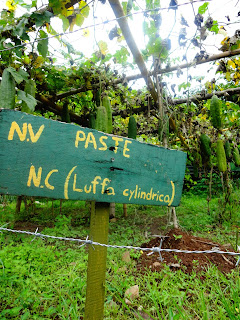I chose the third option, a trip to Colegio Ambientalista de Pejibaye, a local environmental education high school. Our group took off down the street and around the corner from the community center, led by Ilana, a former student of school and now active member of the cooperative association. We were introduced to the vice principle and the environmental education teacher who talked about the school and its mission. They are focused on changing culture in Costa Rica by changing the hearts and minds of people through environmental education. They focus on theory development for principles of conservation, including the interconnection of humans and the environment, as well as practical skill application. The school has around 350 students in 5 grades and provides standard education required of them as a state school – just like any other high school. Then, they provide additional curriculum and requirements for students, including a senior project in addition to the national exam required by the government to receive a diploma. There are only three schools like this in the country and they have excellent educational outcomes and are highly regarded.
A tour of the school's garden included an introduction to the paste plant used to produce luffa sponges!
Walk through community to a sustainable housing project which combines eco-friendly building and energy management with community education for sustainable practices. On our way we found some lovely local people and some giant grasshoppers... oh, nope, those were locusts! We also stopped at a local recycling center where one local has taken on the role of materials collector and initial recycling processor. His pet parrot gave us a warm welcome too.
Walk through community to a sustainable housing project which combines eco-friendly building and energy management with community education for sustainable practices. On our way we found some lovely local people and some giant grasshoppers... oh, nope, those were locusts! We also stopped at a local recycling center where one local has taken on the role of materials collector and initial recycling processor. His pet parrot gave us a warm welcome too.
We returned to community center to have lunch - a traditional meal of rice, picadillo (another Costa Rican staple, made with plantains in this area), frijoles (beans), fried plantains, a fried egg, and a tortilla, all wrapped in a banana leaf. This is a common meal eaten by local farmers which can easily be transported for long days in the field. It was served with a sugar cane drink with ginger. This was easily the best meal I have eaten in Costa Rica.


































No comments:
Post a Comment